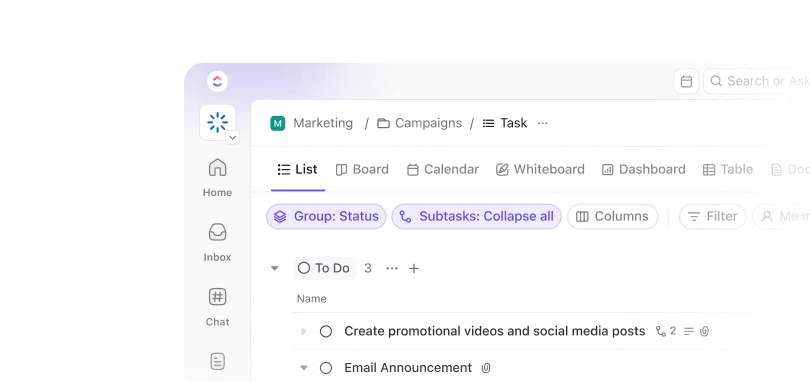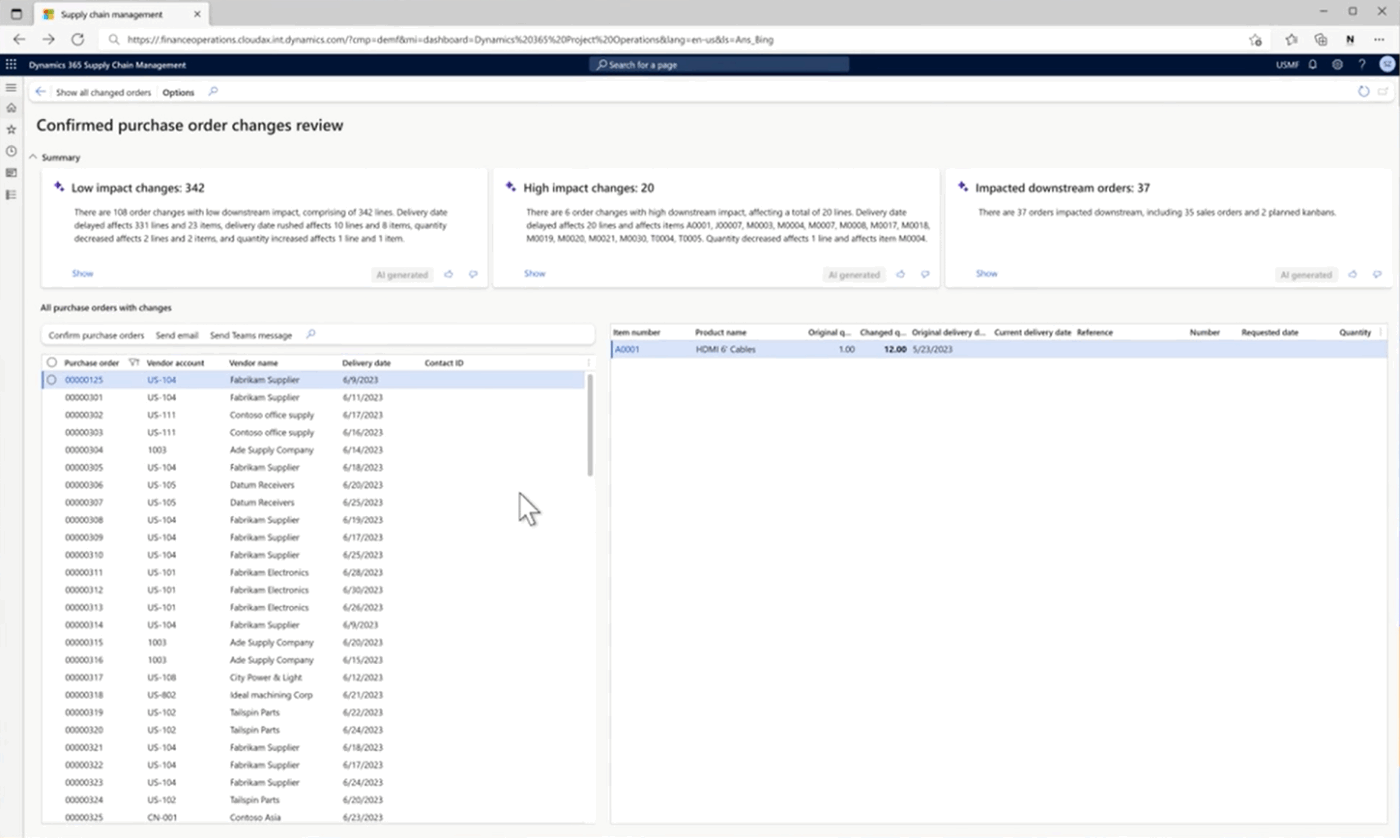Imagine this: It’s the end of the month. Your inventory reports are outdated, finance is buried in spreadsheets, and your team is chasing updates across five different apps. Everything feels disconnected and painfully manual. This is work sprawl in action, and it’s eating away at your company’s productivity and potential.
Enter AI-powered enterprise resource planning (ERP) systems. These tools include features like data entry automation, demand forecasting, predictive analytics, and conversational AI that help your business stay agile and competitive.
Ultimately, it brings all your business processes, data, and teams into a single intelligent ERP system.
In this article, we’ve curated the top AI-powered tools that will enhance your enterprise resource planning.
- Best AI Tools for ERP at a Glance
- What Should You Look for in an AI ERP?
- The Best AI Tools for ERP
- 1. ClickUp (Best for smart task management and ERP workflow integration)
- 2. SAP Business AI (Best for big enterprises handling complex logistics)
- 3. Microsoft Dynamics 365 (Best for teams already using Microsoft 365 as their primary tech stack)
- 4. Oracle ERP Cloud (Best for government agencies and highly-regulated industries)
- 5. Odoo (Best for all-in-one business operation management)
- 6. Acumatica ERP (Best for customizing AI-enhanced ERP systems with an open architecture)
- 7. Infor Cloudsuite (Best for manufacturers needing real-time supply chain visibility)
- 8. Epicor (Best for manufacturers, suppliers, and engineer-to-order environments)
- 9. Sage Intacct AI (Best for finance teams)
- 10. NetSuite with AI (Best for using generative AI for reporting)
- Run Smarter, Faster, and Better Connected Operations with ClickUp
Best AI Tools for ERP at a Glance
Here is what the features, structure, and pricing look like for the 10 best AI ERP systems.
| Tools | Best for | Key features | Pricing |
| ClickUp | All team sizes (individuals, small businesses, mid-market companies, and enterprises) | Collaborative docs with feedback mechanisms and annotations, built-in chat, task management, and AI-powered proofing suggestions, 100+ integrations | Free plan available; Paid plans with additional features; Customization available for enterprises |
| SAP Business AI | Enterprises | Invoice matching, built-in AI, and sustainability assessment | Custom pricing |
| Microsoft Dynamics 365 | Mid- to large-sized supply chain businesses | Task automation, real-time insights, and integration with Microsoft tools | Paid plans available |
| Oracle ERP Cloud | Government agencies and highly-regulated industries | Integrated demand forecasting, supplier management, and risk and compliance management | Custom pricing |
| Odoo | Small to mid-sized businesses | Cloud and on-premise deployment | Free plan available; Paid plans with additional features |
| Acumatica ERP | Small to mid-sized businesses and startups | Open architecture, customizable workflows | Custom pricing |
| Infor Cloudsuite | Mid- to large businesses | Supply chain management, AI features like trend predictions, and advanced data analysis | Custom pricing |
| Epicor | Manufacturers and large-scale distributors | Built-in CRM, pricing assessment, and vendor management | Custom pricing |
| Sage Intacct AI | Finance teams | Automated data entry, integration with accounting software, and smart imports | Custom pricing |
| NetSuite with AI | Manufacturing businesses | Generative AI, HR tools, supply chain management | Custom pricing |
How we review software at ClickUp
Our editorial team follows a transparent, research-backed, and vendor-neutral process, so you can trust that our recommendations are based on real product value.
Here’s a detailed rundown of how we review software at ClickUp.
What Should You Look for in an AI ERP?
59% of global companies struggle with the complexity of their ERP systems. To avoid challenges in IT, HR, and supply chain management, you should choose an AI ERP that suits your unique business operations and needs.
Here are the qualities you should look for in ERP software to get the best out of your investment:
- Smart automation: Automate business processes and routine tasks like invoicing, inventory updates, and human resource management workflows. Reduce manual work, boost process efficiencies, and free up your team to focus on core business processes
- Predictive analytics: Use AI in ERP to forecast demand, monitor financial trends, and identify potential risks. Take proactive and data-backed decisions to stay ahead of operational hiccups, and grab growth opportunities early
- Real-time data visibility: Sync data from across departments to give you a clear, real-time view of your business. See the full picture instantly, whether you’re tracking sales, inventory, or employee performance
- Natural language processing capabilities: Use artificial intelligence to ask questions in plain English and receive instant insights. Make data accessible to non-technical users and speed up decision-making
- Customizable dashboards: Personalize views according to roles and KPIs. Surface the most relevant info on ERP dashboards to monitor performance at a glance
- Workflow orchestration: Connect tasks across departments and set up automated approval chains. Keeps your operations running like clockwork, without constant check-ins
- Third-party integrations: Connect with your existing CRM, e-commerce platform, or accounting software to ensure your tech stacks work together seamlessly. Cut down on duplication and make implementation smoother for teams
- Role-based access and permissions: Keep sensitive financial and employee data secure by limiting access based on roles. Ensure compliance and full control over who can view or edit information
- Audit logs and compliance tracking: Track all changes, approvals, and user actions for regulatory compliance, internal audits, and inventory management
👀 Did you know? Almost 97% of companies consider a cloud-based ERP solution compared to an on-premise ERP solution. And a majority of these companies choose ERP solutions to support business growth and improve their processes and productivity.
The Best AI Tools for ERP
Now let’s learn about the features, use cases, and limitations of these ERP systems.
1. ClickUp (Best for smart task management and ERP workflow integration)
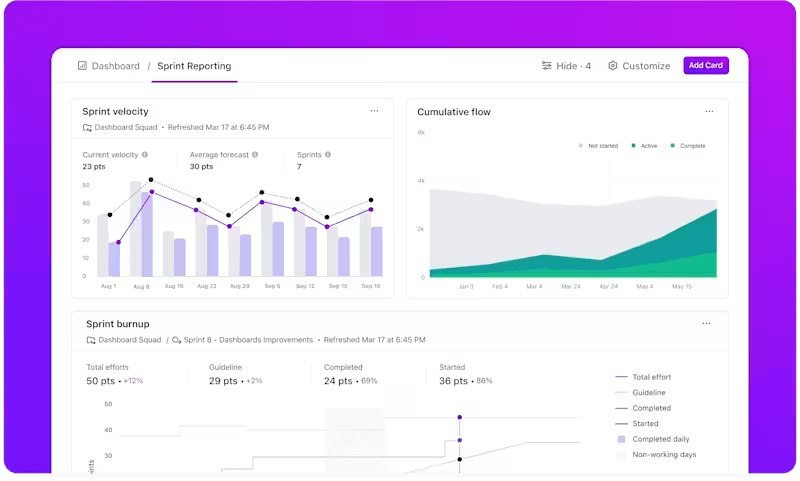
ClickUp is the world’s first Converged AI Workspace, where your ERP projects, tasks, chat, and more come together in a customized, scalable solution.
Through intelligent task management and seamless ERP workflow integration, you can streamline business processes, automate routine tasks, and optimize operational efficiency—all in one place.
Let’s see how.
ClickUp Brain
ClickUp Brain is the platform’s virtual assistant that leverages machine learning to automate repetitive data entry, generate process documentation, and provide predictive analytics for smarter business operations.
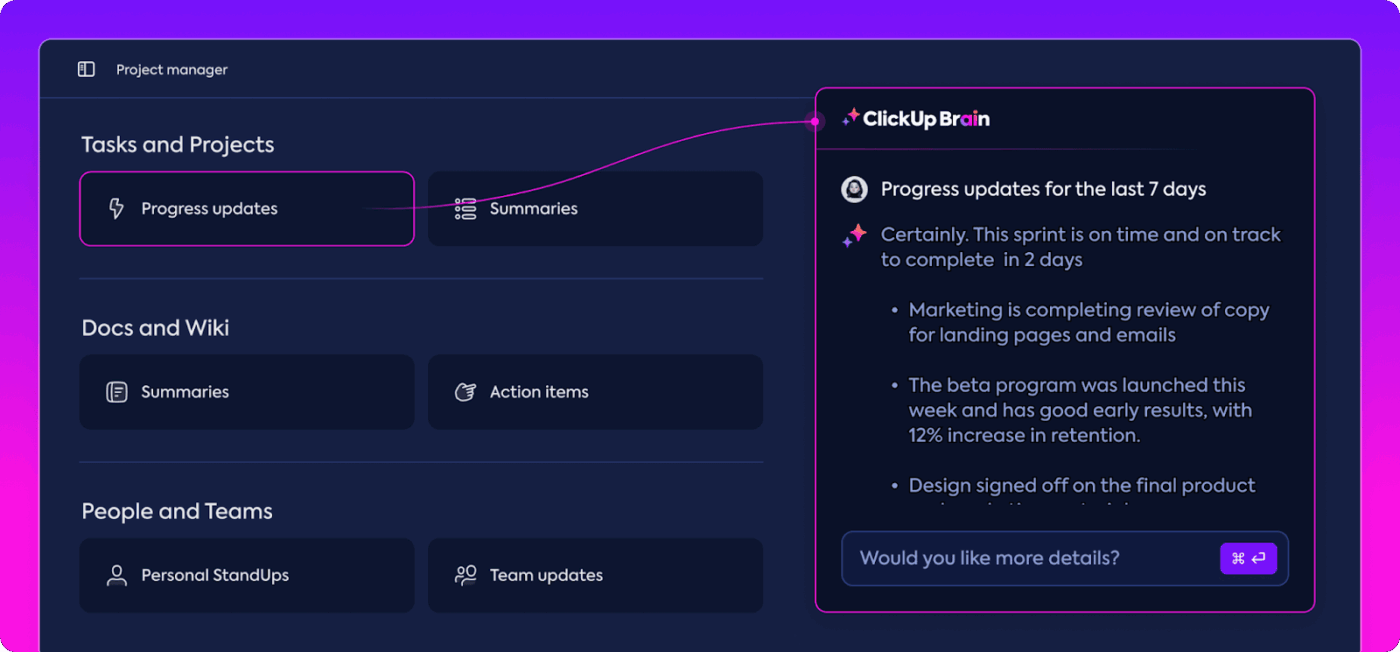
You can manage tasks, predict resource needs, auto-generate project plans, and answer team questions instantly.
Let’s say you are managing a product launch. Instead of manually mapping every step, Brain auto-generates a timeline, flags resource bottlenecks, and predicts delays based on team workload. This totally simplifies resource management. Everything from planning resources to adjusting timelines to staying proactive can be done in just a few clicks.
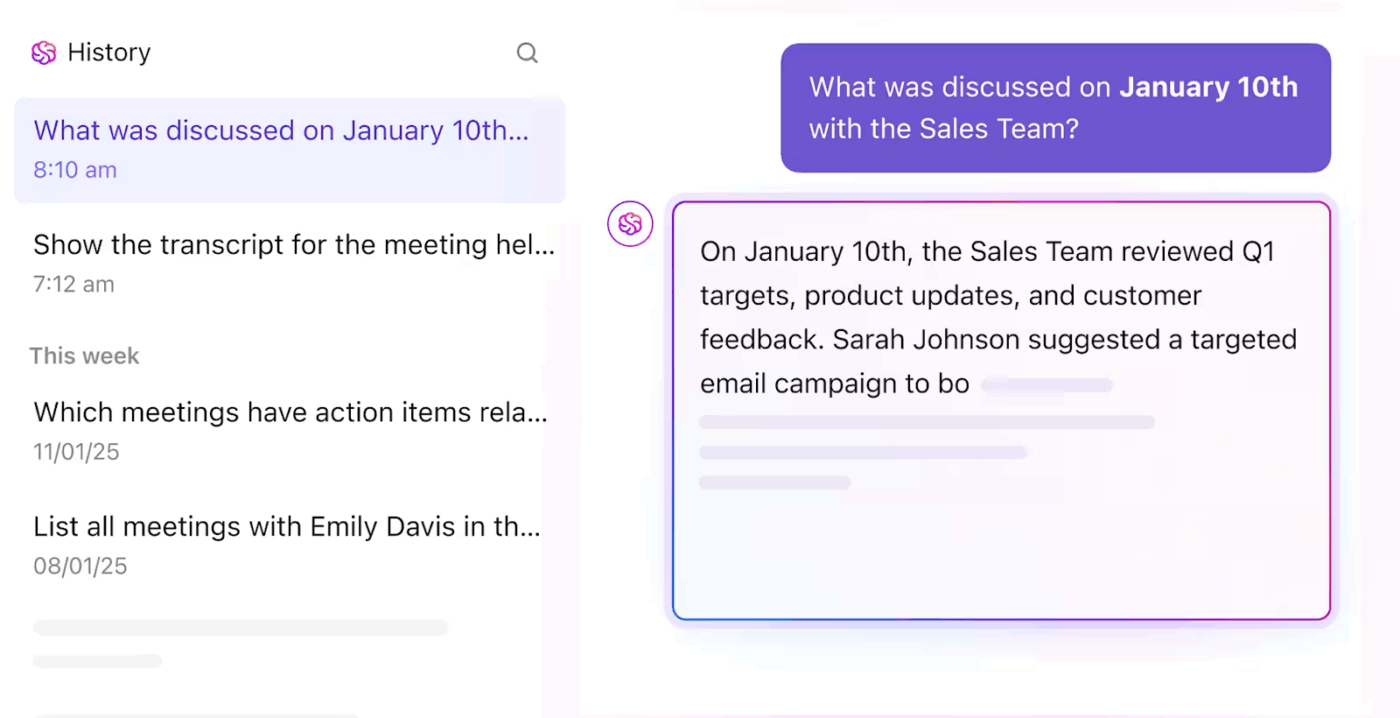
How ClickUp Brain MAX transforms ERP
ClickUp Brain MAX isn’t just another AI tool—it is your command center, designed to streamline every aspect of enterprise resource planning. Here’s how it empowers teams:
- Unified search: Instantly find financial records, HR documents, inventory data, and customer info across all your connected apps and cloud platforms
- Voice-driven productivity: Use Talk to Text to manage tasks, generate reports, and update records with just your voice, streamlining ERP workflows
- AI-powered insights: Get contextual financial analysis, competitor research, and sales predictions directly within your ERP environment
- One powerful AI: Users can leverage premium, external AI tools like ChatGPT, Claude, and Gemini with a single, contextual, enterprise-ready solution
🎥 Check out how to make the most out of Brain Max:
With ClickUp Brain MAX, you get a single, enterprise-ready AI Super App that understands your workflows, connects your data, and lets you manage your entire ERP system—by voice or text. Ditch the patchwork of disconnected AI tools and experience seamless, contextual automation for every ERP use case.
ClickUp Autopilot Prebuilt and Custom Agents
You can unlock the full potential of your ERP system with ClickUp’s AI agents. AI Agents are designed to automate processes, streamline workflows, and deliver actionable insights across your entire organization.
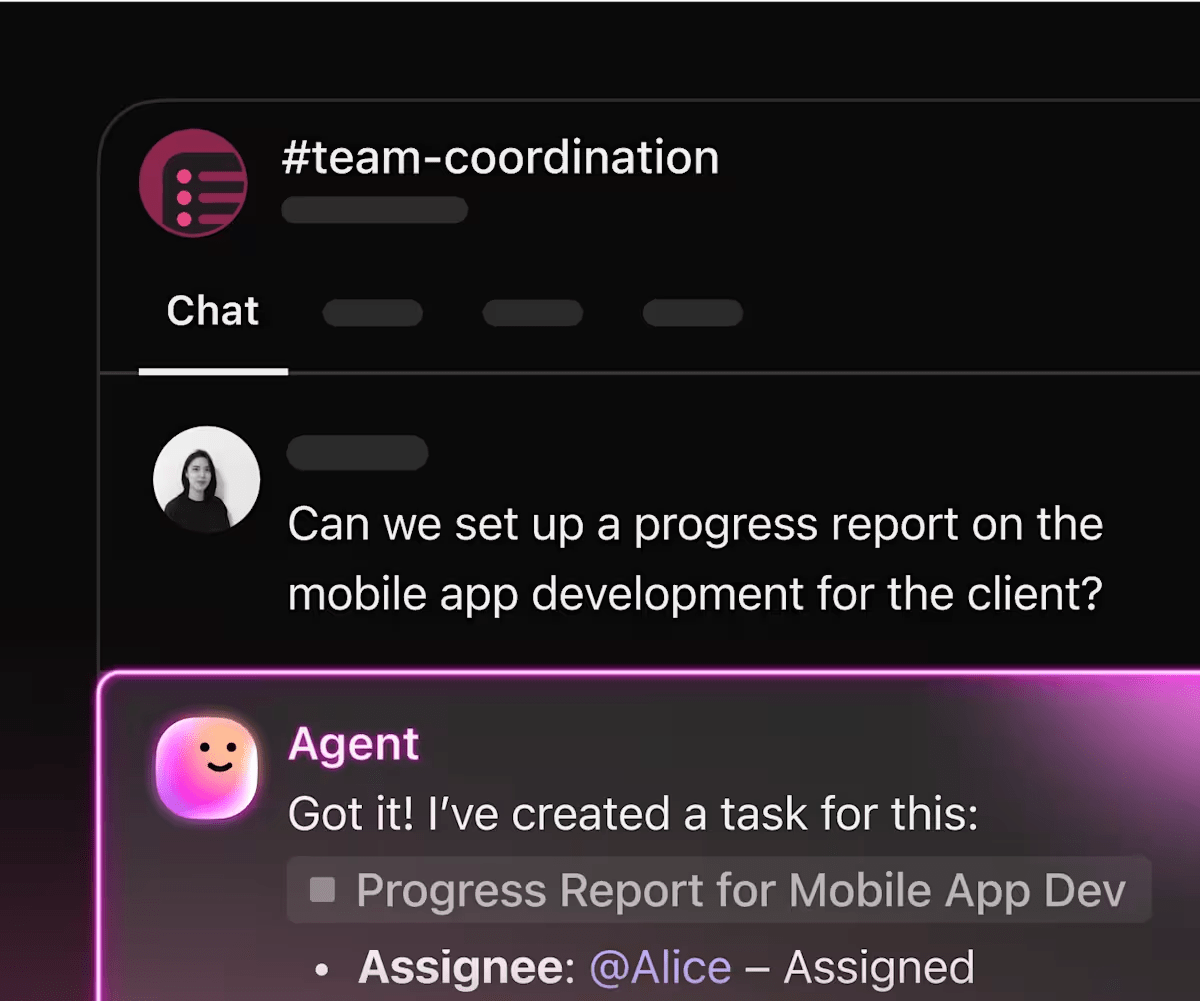
Here are some ways you can use a ClickUp AI agent:
- Automate routine ERP tasks: Prebuilt AI agents can handle repetitive processes like invoice approvals, data entry, and report generation, saving time and reducing manual errors
- Custom workflow automation: Build custom AI agents tailored to your unique ERP needs, such as automating purchase order processing, inventory updates, or HR onboarding workflows
- Smart search and analysis: AI agents can extract key information from documents (e.g., contracts, receipts, financial statements) and provide instant summaries or insights for faster decision-making
- Alerts & recommendations: Set up agents to monitor ERP data for anomalies, deadlines, or compliance issues, and receive proactive alerts or suggestions to keep operations on track
ClickUp Automations
For the automation of your routine ERP Tasks, use ClickUp Automations. It takes the manual effort out of managing ERP workflows by letting you set up custom rules that move Tasks automatically, so nothing slips through the cracks. With over 50+ action triggers, you can automate virtually any part of your ERP operations.
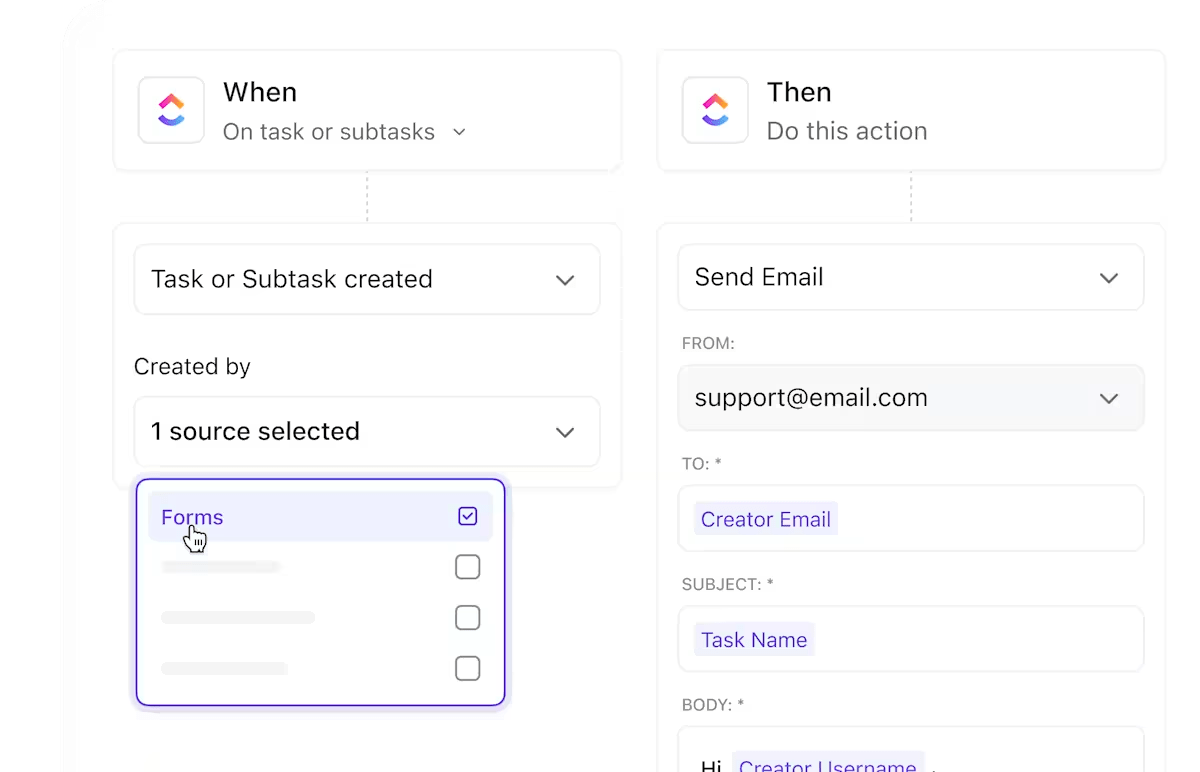
For example, when a purchase order is approved, ClickUp can automatically assign the next Task to your procurement team, update the project stage, and notify accounting to begin invoice processing.
ClickUp Docs
If you need to collaborate with your colleagues or create outlines for resource constraints to share with your team, use ClickUp Docs.

It lets you share ERP documentation, SOPs, and business processes and comment on them in real time. Your business operations team can add their input, highlight specific parts that need attention, and tag relevant teammates directly on the Docs.
Docs are also linked directly to ClickUp Tasks, ensuring that critical process information is always actionable, accessible, and up-to-date. This centralizes knowledge management and streamlines onboarding and compliance.
This AI-powered convergence allows you to connect all your business operations and processes (across your connected app ecosystem) in the same place.
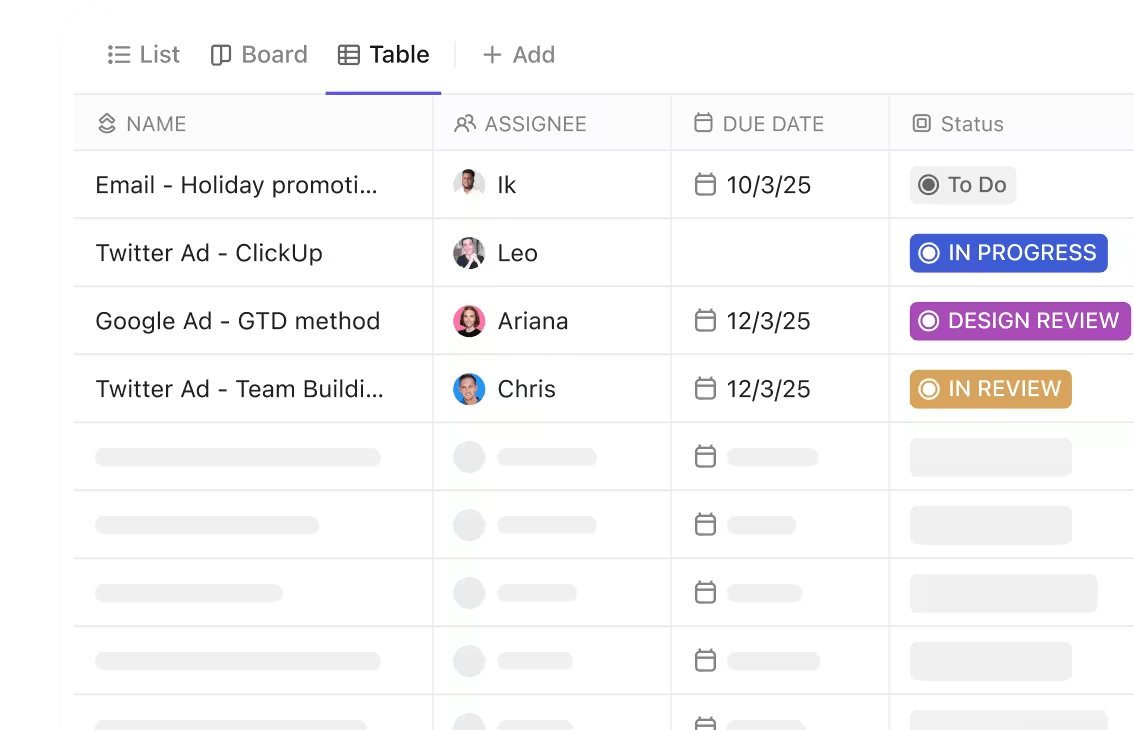
ClickUp Operations is the ERP system that lets you track every operation phase in real-time, from vendor onboarding and system configuration to warehouse staff training.
You get complete visibility across departments, keeping your implementation aligned with budget, milestones, and compliance requirements—all in one place. Additionally, you also get access to all ClickUp Project Management features.
🧩 Template Archive: ClickUp also offers several free customizable ERP implementation and inventory templates to quickly get you started.
For example, the ClickUp ERP Implementation Work Breakdown Structure Template and the ClickUp Inventory Management Template help teams manage complex ERP rollouts and ongoing operations with clear Task hierarchies, Gantt charts, and Timeline Views.
These templates support demand forecasting, resource allocation, and progress tracking, all powered by ClickUp’s AI-driven insights.
ClickUp best features
- Customizable ClickUpDashboards for project accounting and visualizing KPIs, operational metrics, and ERP performance in real time
- Digitize and manage supplier databases, track fixed assets, and monitor production schedules for timely execution
- Create a standard operation protocol and tracking system with operational plan templates
- Plan, execute, and monitor ERP implementation projects of any size with advanced scheduling and dependency management
- Stay connected and discuss resource management pointers with teammates using ClickUp Chat
- Streamline hiring, onboarding, and employee management through automated workflows and centralized documentation
- Maintain SOPs, track compliance tasks, and ensure process standardization using AI-generated documentation and reminders
ClickUp limitations
- Some users may find the extensive features a little overwhelming at first
ClickUp pricing
ClickUp ratings and reviews
- G2: 4.7/5 (9,000+ reviews)
- Capterra: 4.6/5 (4,000+ reviews)
What are real-life users saying about ClickUp?
A G2 review reads:
🧠 Fun fact: Netflix uses resource management algorithms to predict viewer demand and allocate streaming bandwidth efficiently during peak times.
2. SAP Business AI (Best for big enterprises handling complex logistics)
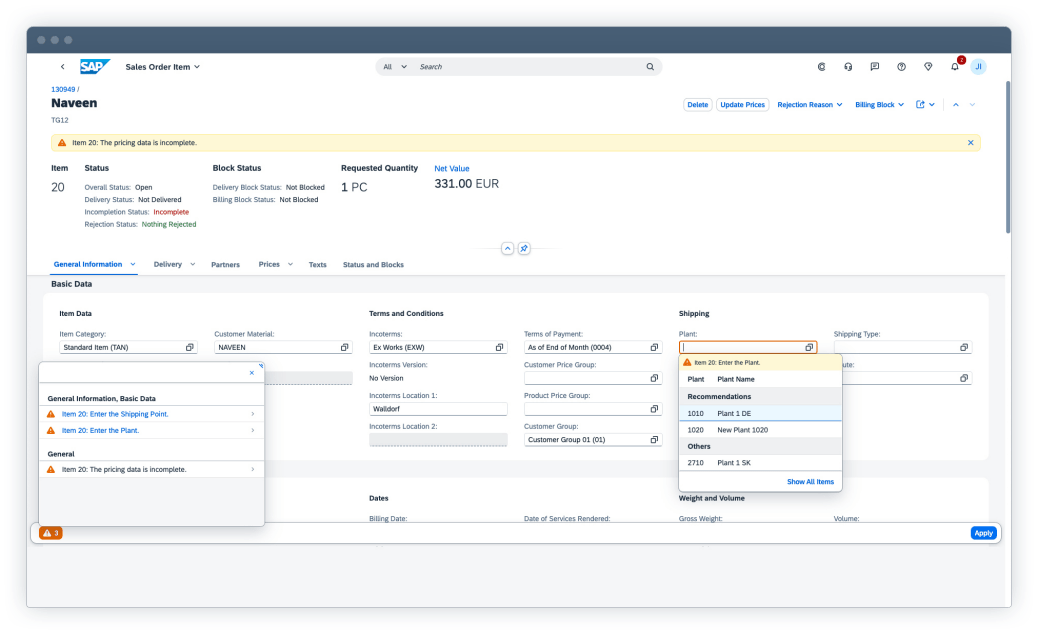
Managing complex operations across departments often leads to data silos, slow decisions, and missed opportunities. SAP Business AI combines enterprise-grade intelligence with a resource planning system. It can automate recurring tasks, track invoices, visualize inventory, and plan resource allocation.
From predictive analytics and revenue forecasting to AI-driven invoice matching and intelligent chatbots for employee queries, this ERP solution is designed to scale with enterprise complexity.
SAP Business AI best features
- Access intelligent invoice matching to process payments faster
- Prevent fraud with AI-powered anomaly detection
- Automate recurring and communication-heavy business processes
- Assess business activities against sustainability factors with machine learning
- Use Joulie, the built-in AI, to get answers and access resources whenever you need
- Manage supply chain, logistics, and inventory metrics, and visualize how your business handles freight and fleet
SAP Business AI limitations
- This enterprise resource planning software comes with a steep learning curve
- The integrations aren’t extensive enough
SAP Business AI pricing
- Custom pricing
SAP Business AI ratings and reviews
- G2: 4.4/5 stars (300+ reviews)
- Capterra: 4.3/5 stars (300+ reviews)
📮 ClickUp Insight: 16% of managers struggle with integrating updates from multiple tools into a cohesive view. When updates are scattered, you end up spending more time piecing together information and less time leading.
The result? Unnecessary administrative burdens, missed insights, and misalignment. With ClickUp’s all-in-one workspace, managers can centralize tasks, documents, and updates, reducing busywork and surfacing the insights that matter most, right when they’re needed.
💫 Real Results: Convene unified 200 professionals into one ClickUp workspace, using customizable templates and time tracking to reduce overhead and improve delivery times across multiple locations.
3. Microsoft Dynamics 365 (Best for teams already using Microsoft 365 as their primary tech stack)
Microsoft Dynamics 365 combines ERP with CRM and project management tools, creating a central hub for managing business operations, projects, and customer relationships.
You can use it to track sales, monitor customer service performance, collect customer data, and even handle finance and supply chain operations.
With AI-powered insights and low-code customization, this ERP inventory management software helps you move faster, serve customers better, and make decisions that drive real growth. If you already use Microsoft 365 as your primary tech stack, this ERP solution is perfect for you.
Microsoft Dynamics 365 best features
- Automate repetitive resource management workflows to boost efficiency
- Gain real-time insights with built-in AI and analytics
- Customize apps easily using low-code tools
- Integrate seamlessly with Microsoft 365 tools like Teams and Outlook
- Track and optimize supply chain logistics end-to-end
- Access licensing for on-premise deployment
Microsoft Dynamics 365 limitations
- The tool can be inconvenient if you don’t use Microsoft
- You may face occasional performance issues with large data sets
Microsoft Dynamics 365 pricing
- Dynamics 365 Business Central Essentials: Starts from $70/month per user
- Dynamics 365 Business Central Premium: Starts from $100/month per user
- Dynamics 365 Business Central Team Members: Starts from $8/month per user
- Dynamics 365 Sales Professional: $65/month per user
Microsoft Dynamics 365 ratings and reviews
- G2: 4/5 stars (800+ reviews)
- Capterra: No reviews available
What are real-life users saying about Microsoft Dynamics 365?
A G2 review says:
📖 Also read: Best Free Project Management Software: Tools to Try
4. Oracle ERP Cloud (Best for government agencies and highly-regulated industries)
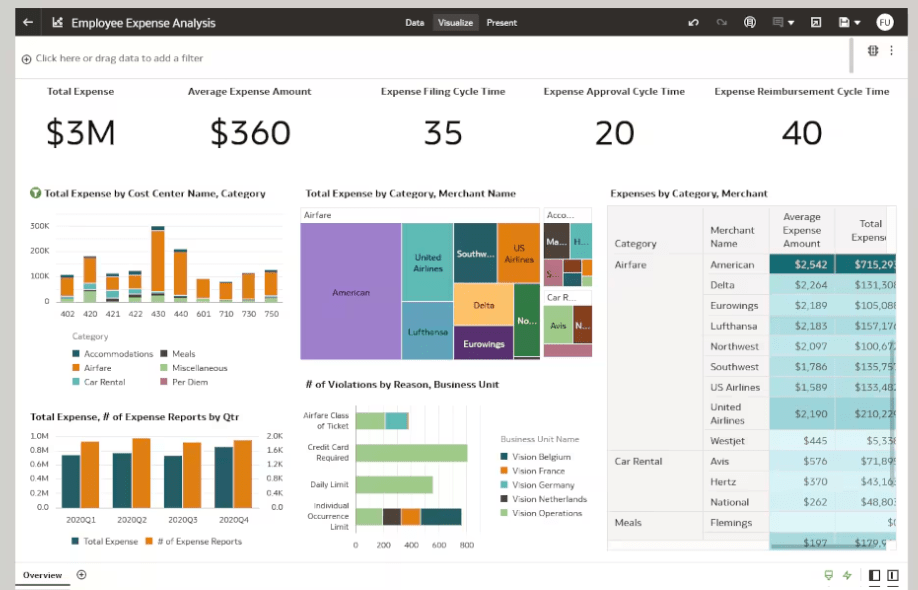
Managing ERP in highly regulated industries, such as finance and healthcare, involves navigating compliance, mitigating risk, and adapting quickly to constant regulatory changes. Traditional ERPs struggle to keep pace, resulting in outdated processes, fragmented reporting, and costly errors.
With built-in agility, automation, and audit-ready intelligence designed for complex, compliance-heavy environments, Oracle ERP Cloud is a good Microsoft Dynamics alternative. It brings finance, procurement, project management, risk, and compliance into one unified system.
Oracle ERP Cloud best features
- Automate financial processes with AI and machine learning
- Gain real-time visibility with dynamic reporting and dashboards
- Manage risk and compliance with built-in controls and audits
- Streamline procurement with intelligent supplier management
- Plan with integrated forecasting and budgeting tools
- Unify project financials, resources, and performance tracking with Oracle AI apps
Oracle ERP Cloud limitations
- Its AI functionalities are limited
- Users report that the UI is complex and not intuitive
Oracle ERP Cloud pricing
- Custom pricing
Oracle ERP Cloud ratings and reviews
- G2: 4.1/5 stars (300+ reviews)
- Capterra: Not enough reviews
What are real-life users saying about Oracle ERP Cloud?
A G2 review says:
📖 Also read: Top Enterprise Software Examples
5. Odoo (Best for all-in-one business operation management)
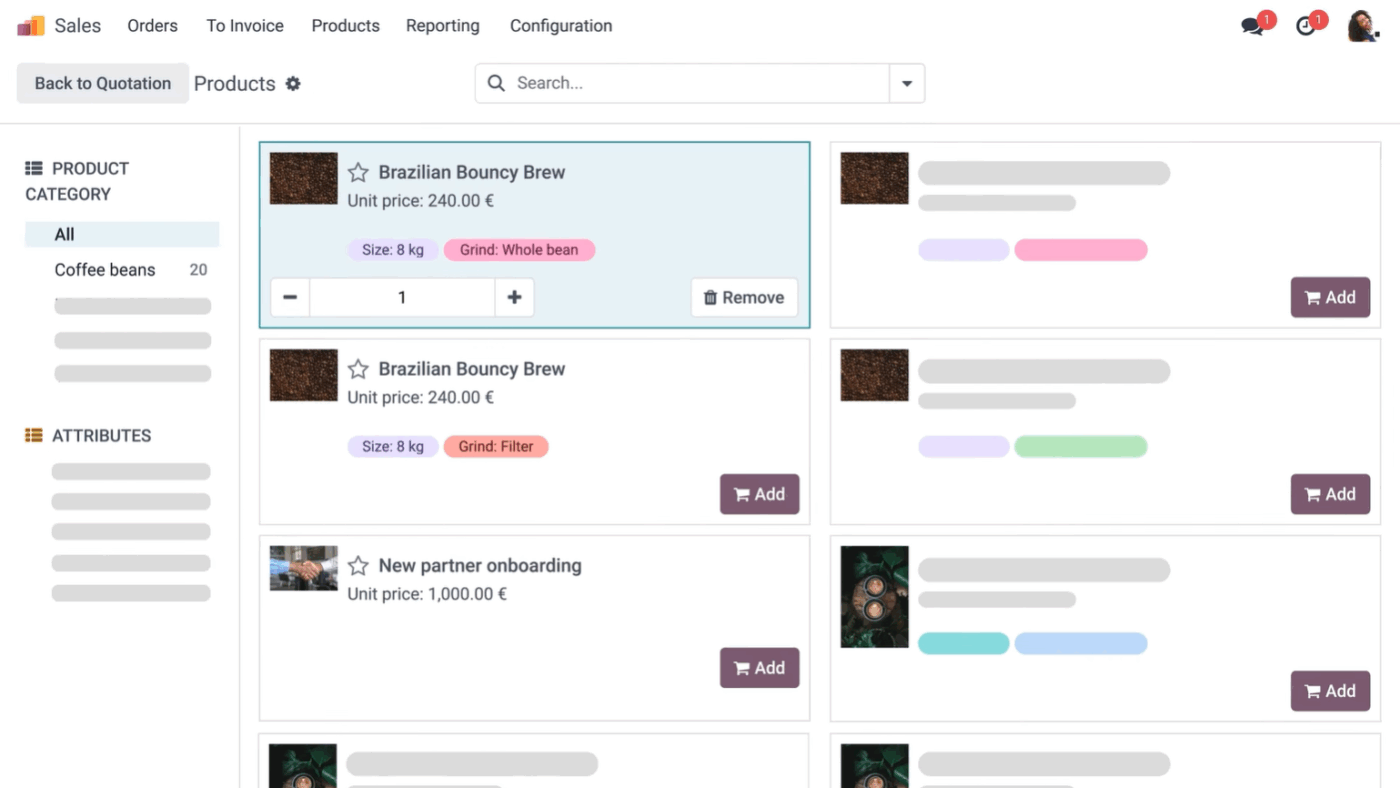
If you’re tired of managing customers and tasks separately, Odoo’s a good option for you. It’s an open-source ERP software that combines CRM, sales, and knowledge in one platform.
Oddo can automatically capture your invoice data and record it in the accounting dashboard. You can sync it with your bank system and keep track of every payment and expenditure from one place.
Additionally, you can assess, sign, and approve documents directly, set up automation for resource management tasks, and even deploy the tool on your company’s server.
Odoo best features
- Add or remove modules as needed, thanks to its flexible modular structure
- Customize workflows, reports, and interfaces to fit specific business needs
- Visualize and manage data and tasks with drag-and-drop tools
- Use built-in AI capabilities to automate tasks that otherwise require human intelligence
- Deploy in both cloud and on-premise environments
- Control user access with granular permissions and audit trails
Odoo limitations
- The software can get expensive when you scale your team
- The loading time is longer while managing complex business operations
Odoo pricing
- Free Forever
- Standard: $31.10/month per user
- Custom: $46.80/month per user
Odoo ratings and reviews
- G2: 4.3/5 stars (200+ reviews)
- Capterra: 4.2/5 stars (1200+ reviews)
What are real-life users saying about Odoo?
A G2 review says:
🧠 Fun fact: NASA has its own resource planning toolkit called SPIFe (Scheduling and Planning Interface for Exploration).
📖 Also read: Best Odoo Alternatives and Competitors
6. Acumatica ERP (Best for customizing AI-enhanced ERP systems with an open architecture)
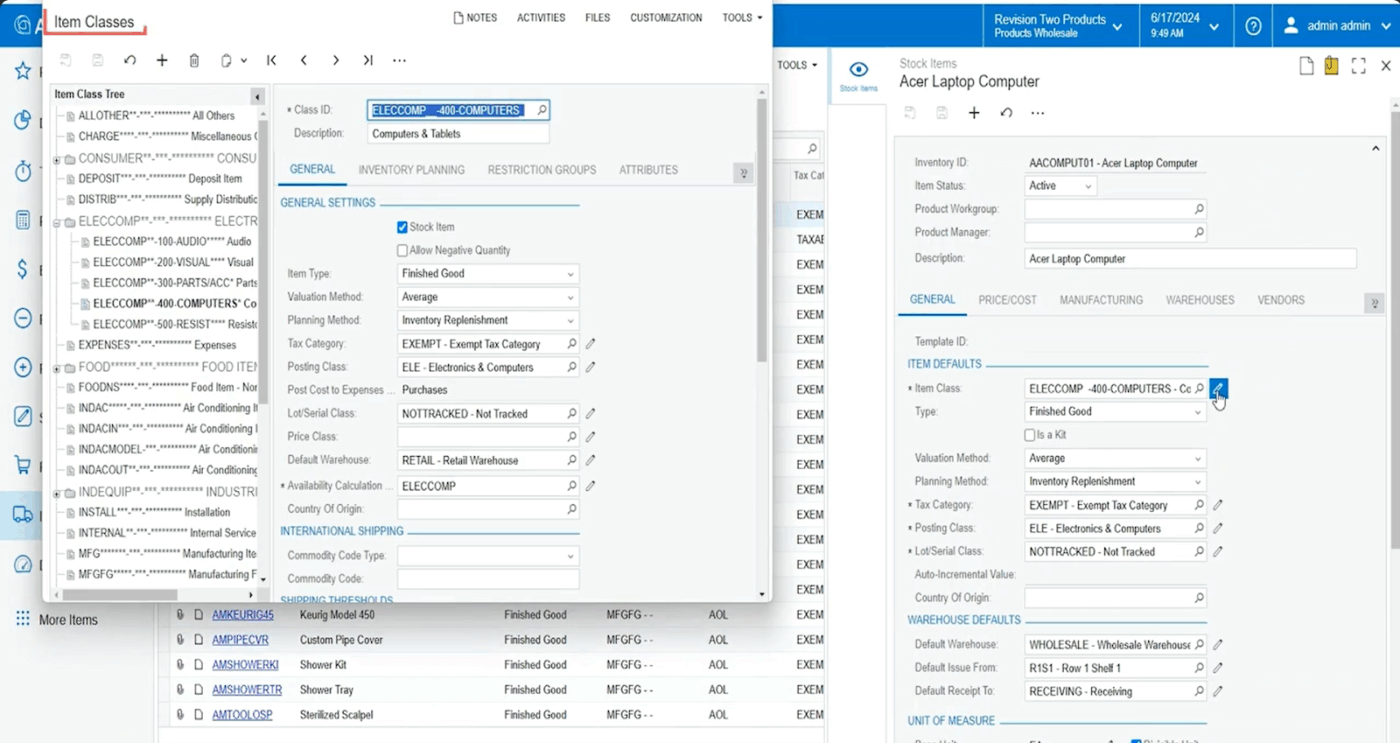
Most traditional ERP systems are either too rigid and expensive to scale or require constant IT maintenance, especially for small—to mid-sized businesses trying to grow.
Acumatica’s ERP system breaks the mold by incorporating AI, making it a popular Salesforce alternative. It includes AI-powered features like anomaly detection, predictive analytics, and smart workflows.
It’s a modern, cloud-first ERP built for usability. You get a modular, open-architecture ERP platform you can tailor to your business. It’s accessible from anywhere, integrates easily with other tools, and gives your entire team real-time access to the data that drives smarter, faster decisions.
Acumatica ERP best features
- Automate workflows with an open and flexible platform that supports intelligent ERP systems
- Connect seamlessly with third-party apps to streamline supply chain management and daily operations
- View real-time and historical data through unified dashboards for smarter decision-making
- Manage finance, inventory, CRM, and projects in one place for full visibility across the business
- Offers AI-driven tools for content creation, data visualization, and improved document recognition
Acumatica ERP limitations
- If you don’t have coding knowledge, using some features can be a little difficult
- The ERP system’s data analysis and report generation process is complex
Acumatica ERP pricing
- Custom pricing
Acumatica ERP ratings and reviews
- G2: 4.5/5 stars (1,500+ reviews)
- Capterra: No reviews available
What are real-life users saying about Acumatica ERP?
A G2 review says:
📖 Also read: Top ERP System Examples
7. Infor Cloudsuite (Best for manufacturers needing real-time supply chain visibility)
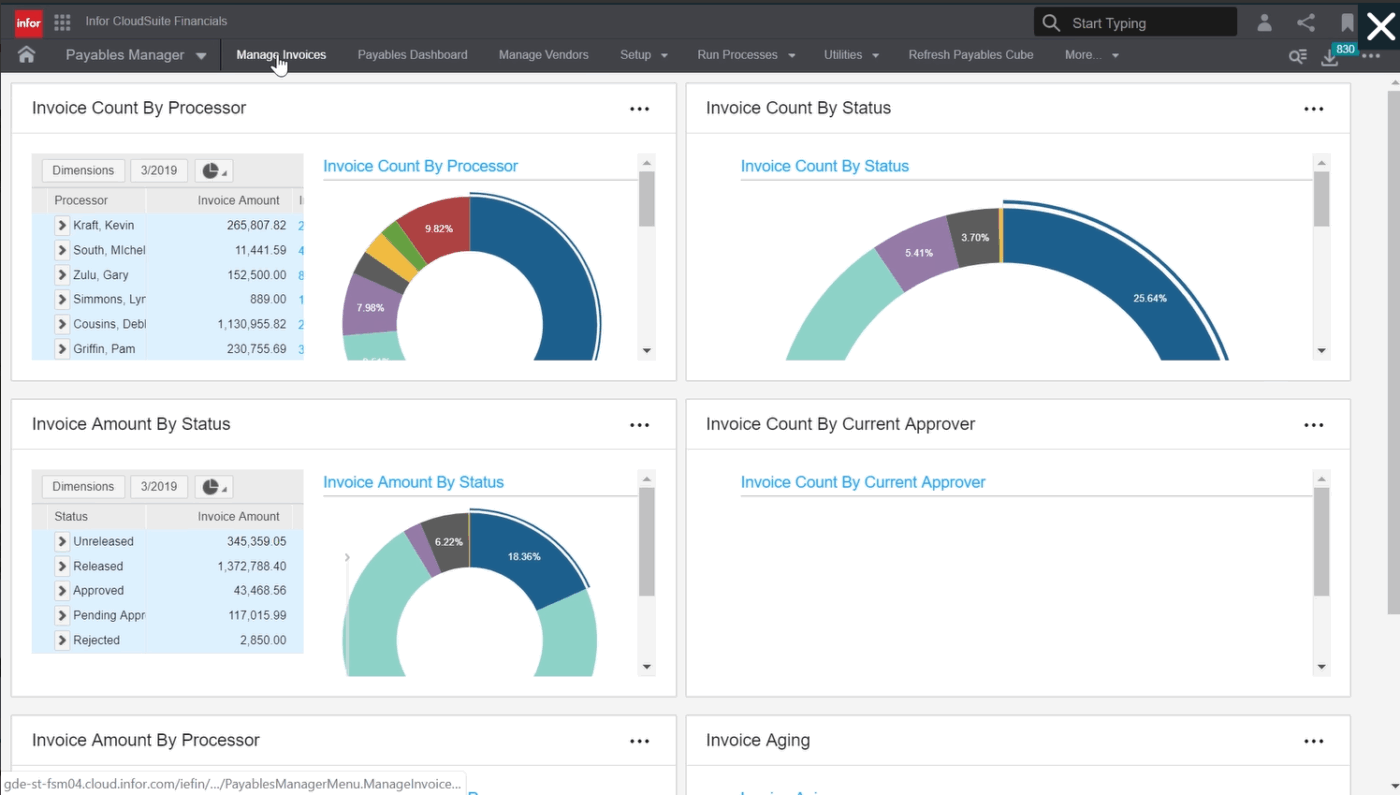
With industry-specific functionality, real-time data insights, and seamless cloud deployment, Infor stands out among AI ERP solutions, especially for complex and high-stakes environments.
It delivers a robust, cloud-native platform tailored to your industry’s exact needs. You can use it to streamline resources for smooth business operations, simplify regulatory compliance, and enable smarter decision-making through connected data and intelligent automation.
Infor Cloudsuite best features
- Reduce manual data entry with automation and smart workflows for finance, procurement, and HR
- Offer simpler user interactions to your team with intuitive interfaces and personalized dashboards
- Perform advanced data analysis with access to both real-time and historical data, and improve business efficiency and decision-making
- Scale effortlessly with cloud-native architecture and flexible deployment options
- Integrate seamlessly with third-party systems for unified enterprise operations
- Strengthen compliance and risk controls with governance tools built into the platform
Infor Cloudsuite limitations
- The cost of high modules can get expensive for startups
- Customer support resolutions take time
Infor Cloudsuite pricing
- Custom pricing
Infor Cloudsuite ratings and reviews
- G2: Not enough reviews
- Capterra: Not enough reviews
What are real-life users saying about Infor Cloudsuite?
A G2 review says:
👀 Did you know? Switching between tasks can cost employees up to 40% of their productive time, largely due to the mental effort required to reorient and regain focus after each shift.
In fast-paced business environments, especially those reliant on multiple tools or disjointed workflows, constant context-switching leads to fragmented attention, slower decision-making, and reduced efficiency.
That’s why integrated ERP platforms like ClickUp are gaining traction: they centralize operations, reduce the need for app-hopping, and let teams stay in flow longer.
8. Epicor (Best for manufacturers, suppliers, and engineer-to-order environments)
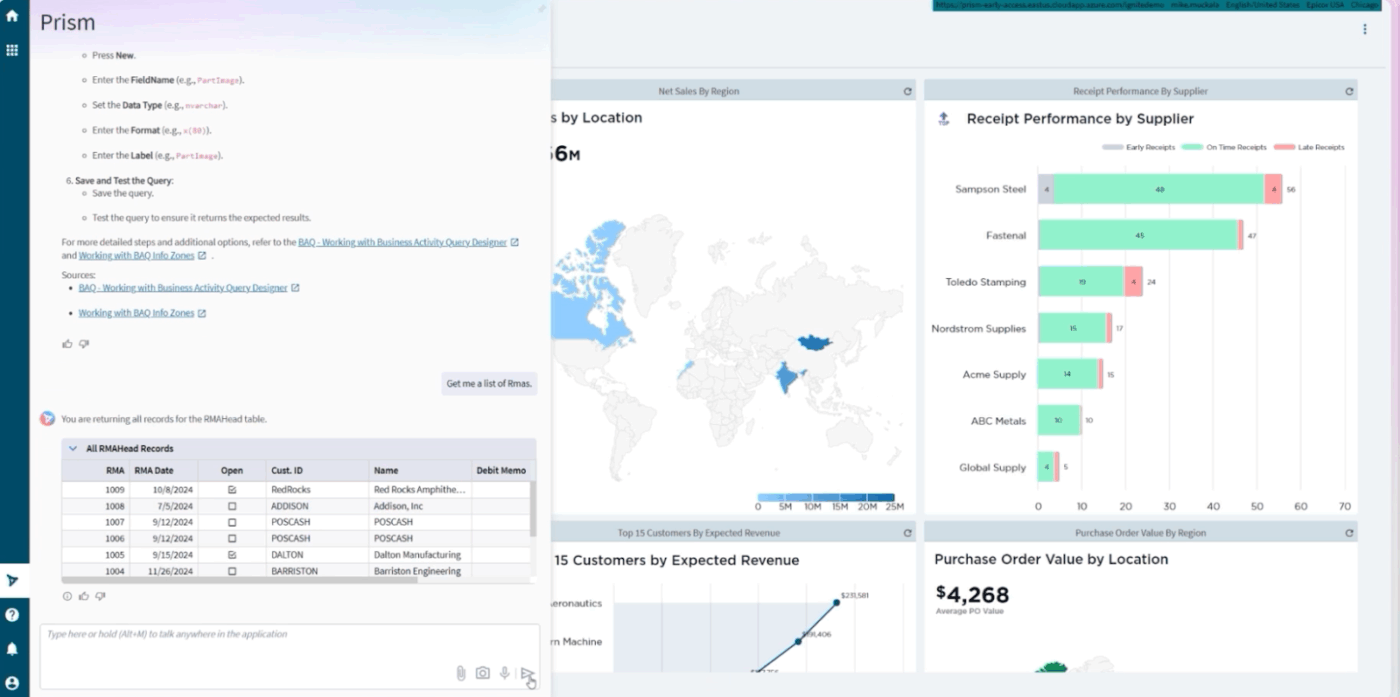
91% of companies note that maintaining optimum inventory levels has been one of the most realized benefits of ERP software.
Epicor’s AI ERP system is specifically designed to help manufacturers, distributors, and ETO companies. You get several products like Epicor Kinetic and Epicor Eclipse to streamline inventory management and other operations.
It’s flexible, easy to use, and smart enough to keep up with your scaling supply chain needs. Moreover, the software has a built-in customer relationship management tool so that you don’t have to scramble between ERP and CRM.
Epicor best features
- Manage financial operations with multi-currency support
- Monitor production planning and shop floor control
- Use the built-in CRM and HR modules to simplify sales and workforce management
- Access business intelligence and analytics dashboards with the Prism AI toolkit to make data-driven decisions
- Set competitive pricing for your products with pricing analytics and contract pricing management
Epicor limitations
- The maintenance cost is much higher than the alternatives
- Integrations with third-party apps are limited
Epicor pricing
- Custom pricing
Epicor ratings and reviews
- G2: 4/5 stars (1,000+ reviews)
- Capterra: Not enough reviews
What are real-life users saying about Epicor?
A G2 review says:
9. Sage Intacct AI (Best for finance teams)
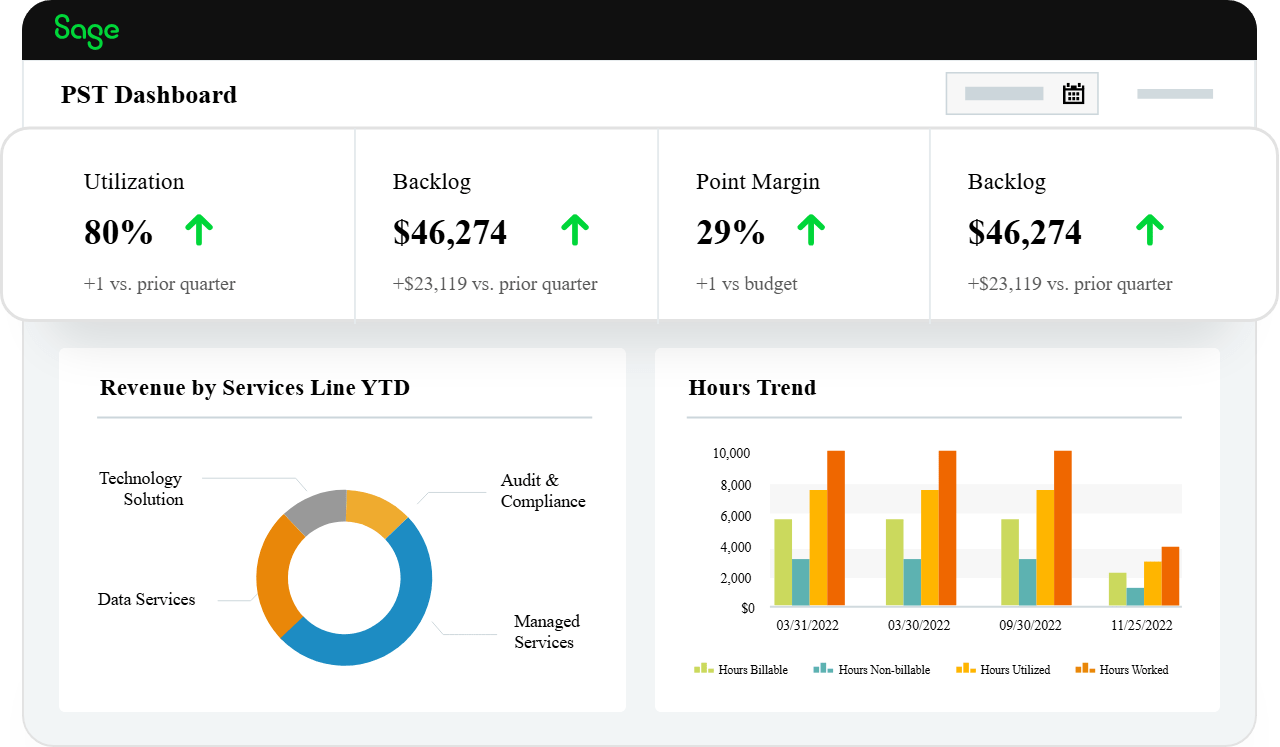
If your finance team is spending more time fixing errors than analyzing business growth opportunities, it’s time for a smarter solution. Sage Intacct is a cloud-based ERP software that focuses on financial management.
It automates core financial tasks, gives you real-time visibility into performance, and helps you scale without the stress. Whether you are managing multi-entity consolidations or building investor-ready reports, Sage Intacct makes finance faster, easier, and far more insightful.
Sage Intacct AI best features
- Manage multi-entity and multi-currency operations with ease
- Generate real-time financial reports and dashboards for smarter decision-making
- Integrate seamlessly with popular tools like Salesforce, ADP, and more
- Use dimensional accounting to track performance across departments, projects, and locations
- Simplify compliance with built-in audit trails and role-based access controls
- Scale effortlessly with a cloud-native architecture designed for growing businesses
Sage Intacct AI limitations
- It has limited mobile functionality
- Small firms may end up paying for features they don’t need
Sage Intacct AI pricing
- Custom pricing
Sage Intacct AI ratings and reviews
- G2: No reviews available
- Capterra: No reviews available
What are real-life users saying about Sage Intacct AI?
A G2 review says:
10. NetSuite with AI (Best for using generative AI for reporting)
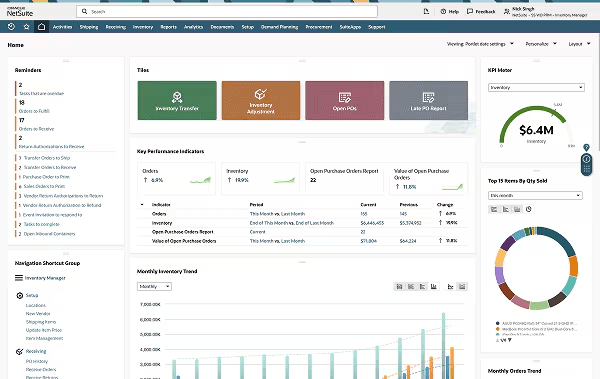
As your business scales, juggling inventory, finances, and operations across multiple tools quickly becomes messy and costly. NetSuite’s AI ERP is a unified, cloud-based platform that brings everything, including financials, supply chain, CRM, and more, into one system that grows with you.
With real-time data, automated workflows, and customizable dashboards, NetSuite helps you streamline operations, improve visibility, and make faster, smarter decisions.
NetSuite with AI best features
- Automate repetitive tasks across finance, procurement, and operations to save time and reduce errors
- Use generative AI services to create reports, suggest actions, and surface key business insights
- Enable seamless process automation for workflows like billing, approvals, and order management
- Improve demand forecasting with AI-driven predictions based on real-time and historical data
- Optimize supply chain management with end-to-end visibility and smart planning tools
NetSuite with AI limitations
- You may face occasional lag or performance issues with large data volumes
NetSuite with AI pricing
- Custom pricing
NetSuite with AI ratings and reviews
- G2: 4.4/5 stars (30+ reviews)
- Capterra: No reviews available
What are real-life users saying about NetSuite with AI?
A G2 review says:
Run Smarter, Faster, and Better Connected Operations with ClickUp
All the AI-powered ERP tools we listed come with excellent USPs for different use cases. But if you want software that packs all the necessary ERP features along with much more, choose ClickUp.
It combines real-time collaboration, AI-powered resource planning, process automation, resource, inventory, and order tracking templates all in one intuitive workspace.
Turn documents into workflows, chats into action, and updates into smart summaries. No coding knowledge or heavy IT experience needed!
Sign up with ClickUp for free today, and your entire team will have the clarity and control they need from an AI-powered ERP system without the complexity.

